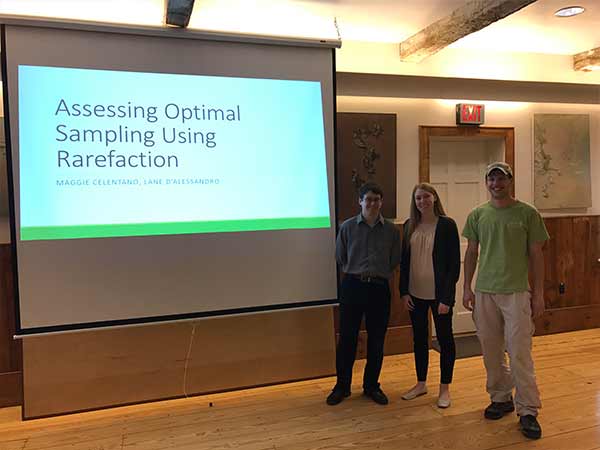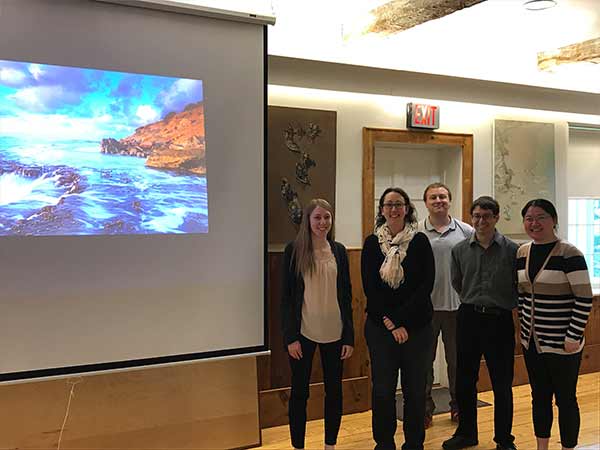Industrial Practicum
As culminating experiences of the program, students complete two industrial practica that use the theoretical and computational tools acquired in core courses to study real-world problems. These team problem-solving practica emulate an industrial microcosm in which undergrads, grads, faculty, and industrial partners work together to study actual problems in which local industrial companies are interested.
Descriptions of the projects investigated each semester can be found below.
Spring 2017

(Left to right) Lane D’Alessandro, Maggie Celentano, and Matt Wilson (Research Technician, Stroud)
“Using Rarefaction to Assess Optimal Sampling Effort in Stream Ecology” By: Lane D’Alessandro and Maggie Celentano
In ecological studies, identifying species richness is key to measuring biodiversity and ecological stability. In order to analyze the species richness of a system, we performed a process known as rarefaction upon the data from White Clay Creek. The data was provided by Stroud Water Research Center.
We compared two different methods of performing rarefaction: the combinatorics method and the bootstrap method. Both methods allowed us to construct a rarefaction curve that plots the number of species as a function of the number of samples taken. Using these rarefaction curves, we then extended the model by examining initial costs and coverages of the samples. These examinations served to identify the optimal number of samples needed to represent the community, which varies by month and location.
As a possible cause of any present differences between months and locations, we examined the number of degree-days that occurred over each month, species evenness, and relative species richness. None of these characteristics appear to correlate with the difference in sampling.

(Left to right) Ben Plumridge, Dr. Valérie Ouellet (Postdoctoral researcher-ecohydrology, Stroud), and Cathy Yu.
“Development of a Habitat Suitability Index for brown trout using Fuzzy Logic” By: Benjamin Plumridge and Cathy Yu
We studied which abiotic parameters best explain the presence or absence of brown trout (Salmo trutta) using a fuzzy logic based model. In our model, we assessed the water temperature, depth and turbidity to develop a Habitat Suitability Index (HSI). The proposed model was designed to analyze the data from White Clay Creek to provide scientific information on habitats and aid decision making for management of the local brown trout habitats. The dataset contained observations in the spring and summer with relevant data for four sites. Using several algorithms, we organized the dataset and included only relevant observations. Using fuzzy logic, we computed an HSI for each observation in the dataset and then plotted HSI as a function of time. The HSIs vary from site to site, but we do see a decline at all sites in the summer months, due to the increase in water temperature. The most suitable habitat in the dataset was the deepest and the least suitable was the most shallow. We have tested two variations of our model by applying fuzzy-logic rules in different ways. Overall, we do not see a significant difference between the two variations and we believe both are valid for assessing habitat suitability. We also studied and tested the sensitivity of the model to different membership functions and parameter values in our fuzzy logic implementation. The output HSIs indicated that the model is less responsive to membership function changes, but very responsive to parameter changes.

Both groups and Stroud liaisons.

Maggie, Dr. Kolpas, Ben, Lane, and Kathy.
